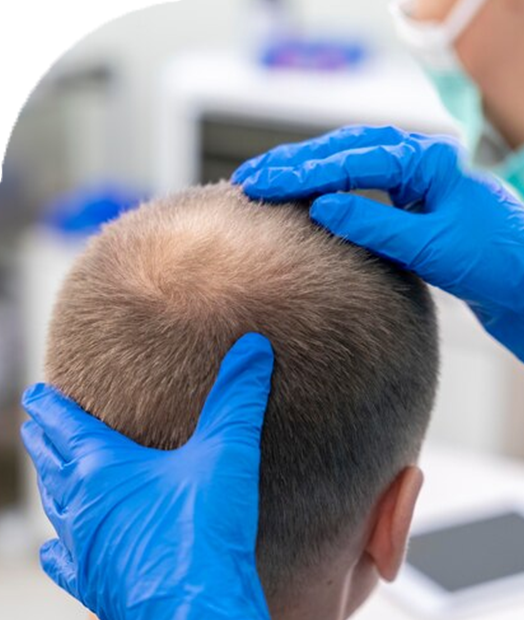- 09619758202
- info@drpanktisrevive.com
- Mon - Sat: 10 AM - 07 PM


Hair Transplantation is a surgical technique that involves moving individual hair follicles from one part of the body (the donor site) to bald or balding parts (the recipient site). It is primarily used to treat male pattern baldness, whereby grafts containing hair follicles that are genetically resistant to balding are transplanted to bald scalp.
However, it is also used to restore eyelashes, eyebrows, beard hair, chest hair, and pubic hair and to fill in scars caused by accidents or surgery such as face-lifts and previous hair transplants. Hair transplantation differs from skin grafting in that grafts contain almost all of the epidermis and dermis surrounding the hair follicle, and many tiny grafts are transplanted rather than a single strip of skin. Follicular Unit Hair Transplantation relocates hair naturally.
Follicular Unit Hair Transplantation is worlds ahead of the standard hair transplant procedure performed by the many of today’s surgeons.
To understand why the results of this hair transplant procedure look so natural, you must first understand how hair actually grows.
Advantages of a Follicular Unit Hair Transplantation over standard procedures:

FUE (Follicular Unit Extraction) Hair Transplant :
The FUE (Follicular Unit Extraction) technique or hair transplant method of transferring individual hair follicles, was introduced in 2003. FUE is the most modern method of hair transplant and tends to prevail globally since it is minimally invasive. In order to perform hair transplant FUE method , the plastic surgeon has to be specialized and exceptionally trained since it is considered to be an extremely demanding method from a technical standpoint.
Successful Hair Transplant The design and distribution of hair follicles during their placement for the hair transplant, is one of the most critical factors for success of the surgery that solely depends on the skill of the plastic surgeon.









The design and distribution of hair follicles also is completely customized and must meet the needs of each patient fulfilling three basic conditions:



FUT Hair Transplant technique :
– The FUT technique (Follicular Unit Transplant) or strip technique, is an older method for treating male baldness. It was introduced in 1990s and rapidly spread worldwide. Lately the FUT technique tends to fall back, since it is replaced by the less invasive FUE method. The main reason for this is that FUE method presents very impressive results, without the difficult consequences of FUT technique.
The main steps of the FUT technique are:






The results of the FUT technique depend mainly on the skill and the experience of the surgical teams and can be excellent. Since androgenetic alopecia (male baldness) is an evolving phenomenon, it may require a second surgery after a few years.
The main disadvantage of FUT method is the creation of permanent and often deformed scars in the donor area, often accompanied by permanent numbness in the area or by the presence of painful neuroma at the area of the scar. In addition, scarring of the donor area makes it difficult to re-operate, whereas a second surgery is required to better cover the problematic area. Another major disadvantage is that the injury suffered by the follicles during the processing of the strip can lead to reduced survival of the transplanted hair follicles.
It is often observed nowadays that patients, who have undergone hair transplant for treating male baldness with strip method, are referring to specialized plastic surgeons in an attempt to restore or reduce the scarring created by the strip method.